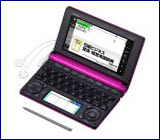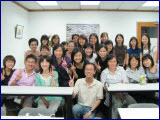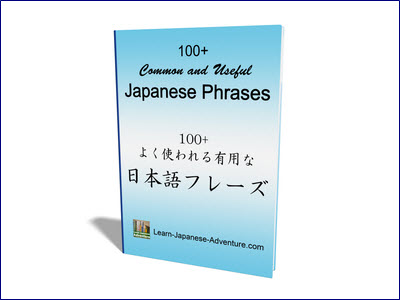- Home
- Basic Lessons
- Japanese Particles wa and ga
Differences between
Japanese Particles は (wa) & が (ga) -
Free Japanese Lessons: 24
Many students are confused about the differences between the 2 Japanese particles は (wa) & が (ga).
While in some occasions it's possible that they are interchangeable within a sentence with slightly different meanings, there are many distinct differences between these 2 particles.
There are many functions for particles は (wa) & が (ga).
In this lesson, you will get to learn the main differences between them and when to use which of them in different situations.
If you can understand these differences correctly, you will be able avoid mistakes made by many students.
Functions of Japanese Particle は (wa)
1. Topic Marker
Particle は (wa) is usually used as a topic marker in a sentence. When a noun is marked as a topic by は (wa), it's something both the speaker and listener are familiar with. For example, if the speaker says...
- たなかさん は せんせいです。
tanaka san wa sensei desu
Meaning: Mr Tanaka is a teacher.
...the speaker assumes that the listener also knows about Mr Tanaka and thereby knows who he is talking about.
2. Contrast Marker
Another function of particle は (wa) is using it as a contrast marker. For instance, when you say...
- わたしはコーヒーをのみません。
watashi wa ko-hi wo nomimasen
...you are just expressing that you don't drink coffee. However, if you change を (wo) to は (wa)...
- わたしはコーヒー は のみません。
watashi wa ko-hi wa nomimasen
...you emphasize that you don't drink coffee, but any other drink. Notice that there are two は (wa) in the above example.
Normally only one は (wa) or one topic is allowed in a sentence. In this case, the second は (wa) is the contrast marker. So it's ok that there are two は (wa).
3. Universal Things
When you are describing something with adjectives, you will normally use this sentence pattern of Noun が Adjective です. This has been explained in the section of Japanese body parts.
However, when it comes to describing universal things that never change such as snow and earth, you need to use Japanese particle は (wa) instead. For instance, you will have to say...
- ゆき は しろいです。
yuki wa shiroi desu
Meaning: Snow is white.
- ちきゅう は まるいです。
chikyuu wa marui desu
Meaning: Earth is round.
That's because if you say ゆき が しろいです (yuki ga shiroi desu), it sounds like normally snow is in other colors other than white. This is incorrect. Therefore, for description of universal things that never change, use は (wa).
Let's say if something terrible happens one day and snow becomes red. In this case, you can say ゆき が あかいです (yuki ga akai desu - Snow is red) because this is new information that we don't know.
Functions of Japanese Particle が (ga)
1. Subject in Description Sentence
You have learned this in lesson 7 on expressing existence in Japanese. You use particle が (ga) to describe thing that you see. For example...
- つくえのうえにほん が あります。
tsukue no ue ni hon ga arimasu
Meaning: There is a book on the desk.
You are just describing what you see with nothing particular in your mind.
2. New Information
Particle が (ga) is also used when you are giving new information in a sentence. Like for example, if you say...
- あそこでこども が はしっています。
asoko de kodomo ga hashitte imasu
Meaning: There are children running over there.
...you are giving new information that there are children running over there. You cannot use は (wa) here because the listener don't know which child you are talking about.
Therefore only when the listener knows which child you are referring to, you can then use は (wa) as the topic marker to be more specific.
3. Fixed Sentence Patterns
There are some fixed sentence patterns that use the Japanese particle が (ga), such as those which you use to describe Japanese body parts, and those which you use to describe Likes and Dislikes in Japanese.
All these have the same construction of "... は (wa) ... が (ga)", just like...
- ぞう は はな が ながいです。
zou wa hana ga nagai desu
Meaning: Elephant's nose is long.
- わたし は すいか が すきです。
watashi wa suika ga suki desu
Meaning: I like water-melon.
4. Question Word for Object
- どのほん が あなたのですか。
dono hon ga anata no desu ka
Meaning: Which book is yours?
As you can see in the above question, Japanese particle は (wa) cannot be used in question word, because Topic is something you should know you are talking about.
どのほん (dono hon) which means "Which book" indicates the speaker doesn't know which book, therefore が (ga) is used instead.
5. Question Word for People
- だれ が たべましたか
dare ga tabemashita ka
Meaning: Who ate it?
Similarly, particle は (wa) cannot be used in question word for people. That's because you don't know who you are talking about. So it's always だれが (dare ga), you can never use だれは (dare wa).
There are many more functions for this 2 Japanese particles は (wa) and が (ga). What you have learned above are just some main functions.
If you want to know more about Japanese particles, I recommend you get one of these books on particles.
Related Pages
Lesson 11: Particles.
Lesson 14: Particles Change in Negative Answers.
Lesson 15: Particles ka and mo with Question Words.
Lesson 16: Particles to and de.
Lesson 27: Particle to for Quotation.
Intermediate Lesson 14: Particle ga for Introduction.
Intermediate Lesson 18: Particle de with more Functions.
Monster Sale! Get 40% OFF forever on Premium & Premium PLUS plans! Ends on 24 Oct 2025
The link above is an affiliate link, which means that I would earn a commission (at no extra cost to you) if you do end up purchasing the related learning course.
Previous - Lesson 23: Japanese Verbs Motion
Next - Lesson 25: Japanese Adverbs
Buy me a coffee








Facebook Comments
Don’t see the comments box? Log in to your Facebook account, give Facebook consent, then return to this page and refresh it.